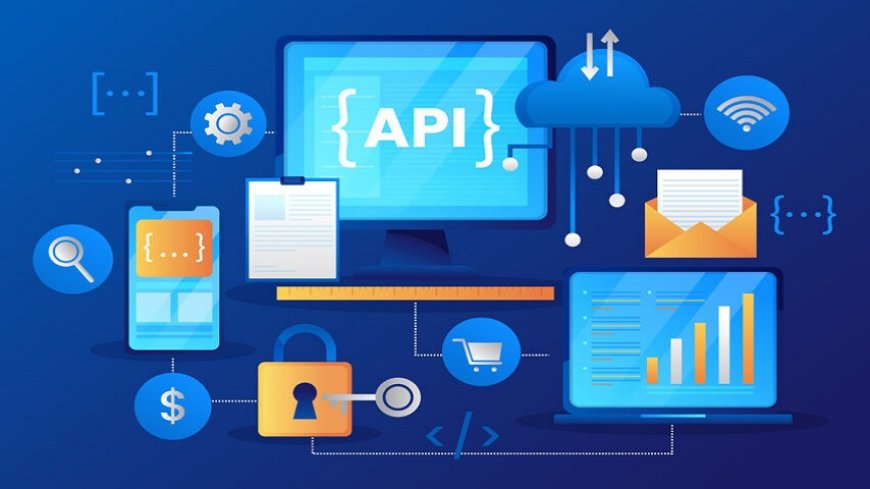From Vision to Reality: How Web Application Development Companies Execute Ideas
In the digital age, where the virtual realm is as tangible as the physical, web applications serve as the conduits of innovation and connectivity.

In the digital age, where the virtual realm is as tangible as the physical, web applications serve as the conduits of innovation and connectivity. Behind every successful web application lies a journey from abstract vision to concrete reality. Web application development companies are the architects of this transformation, turning ideas into functional, user-friendly solutions that redefine industries and empower businesses.
At the heart of this journey is the intricate process of ideation and conceptualization. It begins with a spark—an idea born from a need, a problem, or a vision of improvement. Whether it's streamlining operations, enhancing user experience, or revolutionizing an entire sector, the genesis of a web application starts with identifying a purpose. This initial phase involves brainstorming sessions, market research, and discussions to crystallize the concept and define its objectives.
Once the idea takes shape, the next step is to translate it into a blueprint—a comprehensive plan that outlines the functionality, features, and user interface design. Web application development companies leverage various methodologies such as Agile or Waterfall to organize the development process efficiently. Agile methodologies, for instance, emphasize iterative development, allowing for flexibility and continuous refinement based on feedback.
With the blueprint in hand, the development team embarks on the implementation phase, where coding and programming skills come to the forefront. Using programming languages like HTML, CSS, JavaScript, Python, or Ruby on Rails, developers breathe life into the conceptual framework. They build the backend infrastructure, databases, and APIs that enable seamless interaction between the user interface and the underlying systems.
Simultaneously, designers work on creating an intuitive and visually appealing user interface (UI) and user experience (UX). Through wireframing, prototyping, and user testing, they ensure that the application not only looks good but also functions seamlessly across different devices and platforms. Accessibility, responsiveness, and aesthetics are meticulously crafted to enhance usability and engagement.
As development progresses, rigorous testing becomes paramount to identify and rectify any bugs, glitches, or performance issues. Quality assurance engineers conduct thorough testing scenarios, including functional testing, usability testing, compatibility testing, and security testing, to guarantee the application's reliability, stability, and security. Continuous integration and automated testing tools further streamline this phase, accelerating the detection and resolution of potential issues.
Beyond technical proficiency, effective project management is essential to keep the development process on track and within budget. Project managers oversee timelines, allocate resources, and facilitate communication between team members and stakeholders. They ensure that the project remains aligned with the initial vision while accommodating changes and evolving requirements.
Collaboration and communication are the cornerstones of successful web application development. Cross-functional teams comprising developers, designers, testers, and project managers collaborate closely, sharing insights, troubleshooting challenges, and iterating on solutions. Regular meetings, progress updates, and feedback loops foster transparency, accountability, and synergy within the team.
Moreover, client involvement is integral throughout the development lifecycle. Web application development companies maintain open channels of communication with clients, seeking their input, gathering feedback, and addressing concerns promptly. Regular demos and milestone reviews allow clients to track progress, provide feedback, and steer the direction of the project based on their evolving needs and preferences.
Once the development phase concludes, the focus shifts to deployment and launch. Deployment involves configuring servers, optimizing performance, and ensuring scalability to accommodate varying loads and user traffic. Web application development companies leverage cloud computing platforms like AWS, Azure, or Google Cloud for scalable infrastructure and reliable hosting solutions.
Post-launch, the journey continues as developers monitor the application's performance, gather user feedback, and implement updates and enhancements. Continuous improvement is a core principle, driven by insights gleaned from analytics, user behavior patterns, and market trends. By staying agile and responsive, web application development companies adapt to changing landscapes and evolving user expectations, ensuring that the application remains relevant and competitive in the long run.
In conclusion
The journey from vision to reality for web application development companies is a multifaceted odyssey marked by creativity, collaboration, and technical expertise. By orchestrating the convergence of ideas, technology, and user-centric design, these companies transform abstract concepts into tangible solutions that enrich lives, streamline processes, and drive innovation across industries. From ideation and implementation to deployment and beyond, they are the catalysts that bridge the gap between imagination and achievement in the digital realm.
Transform your digital presence with premier web application development in Dubai. Empower your business today!
What's Your Reaction?





























